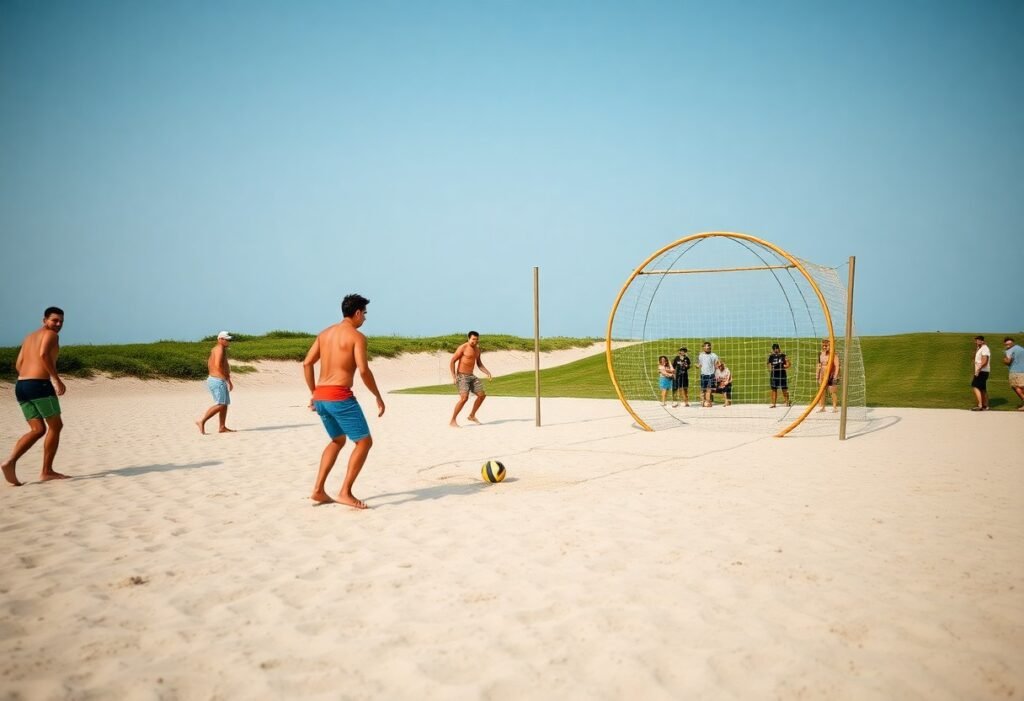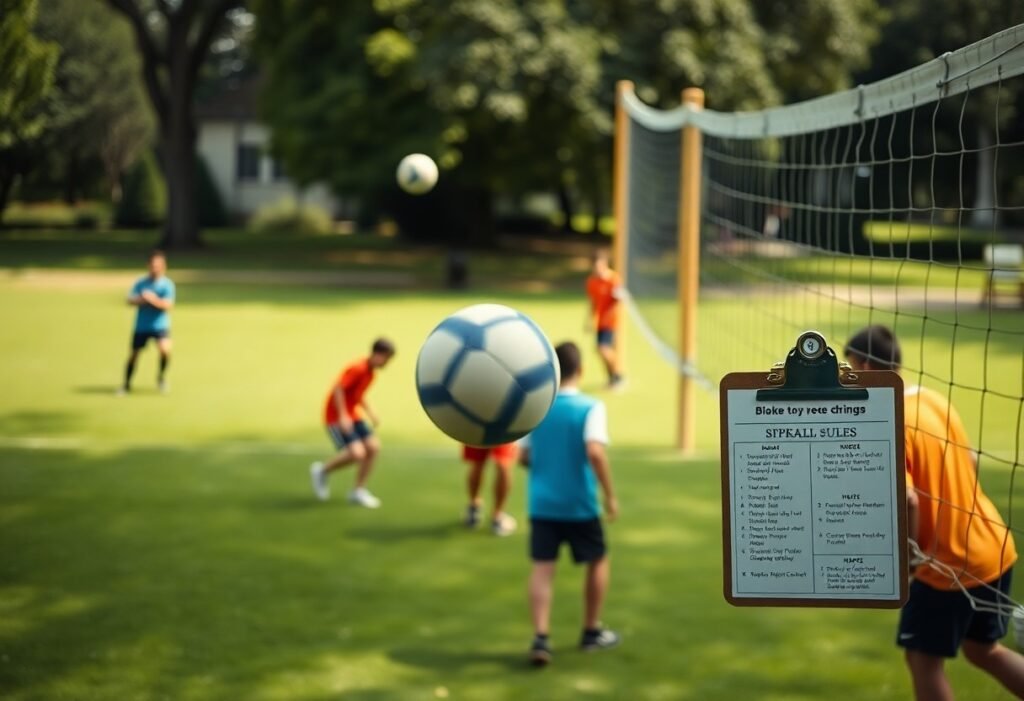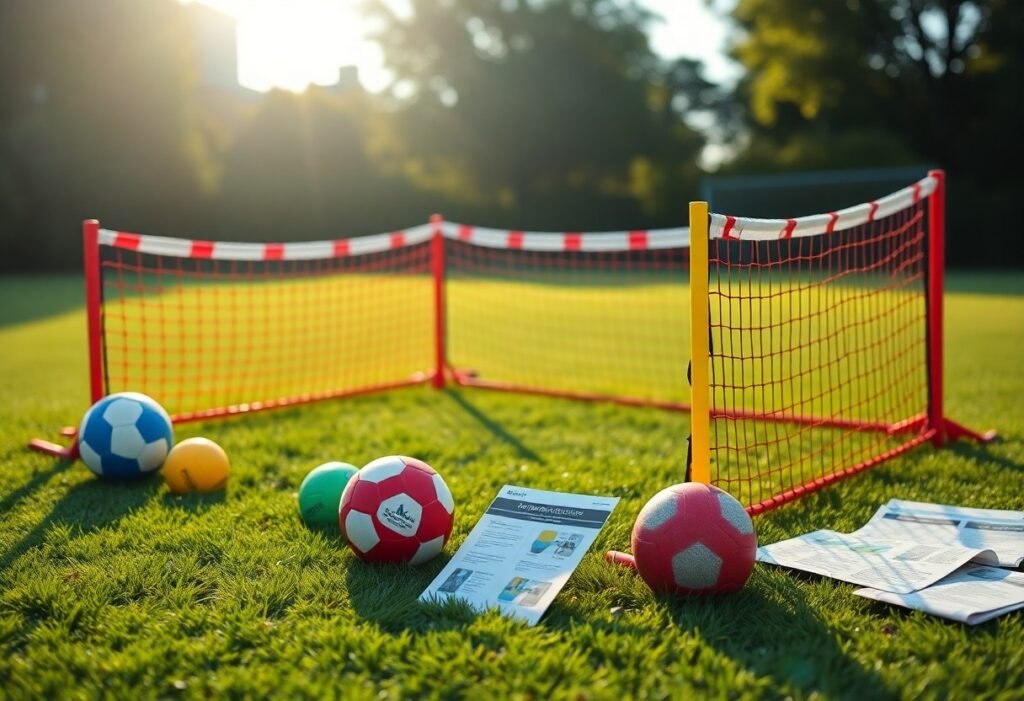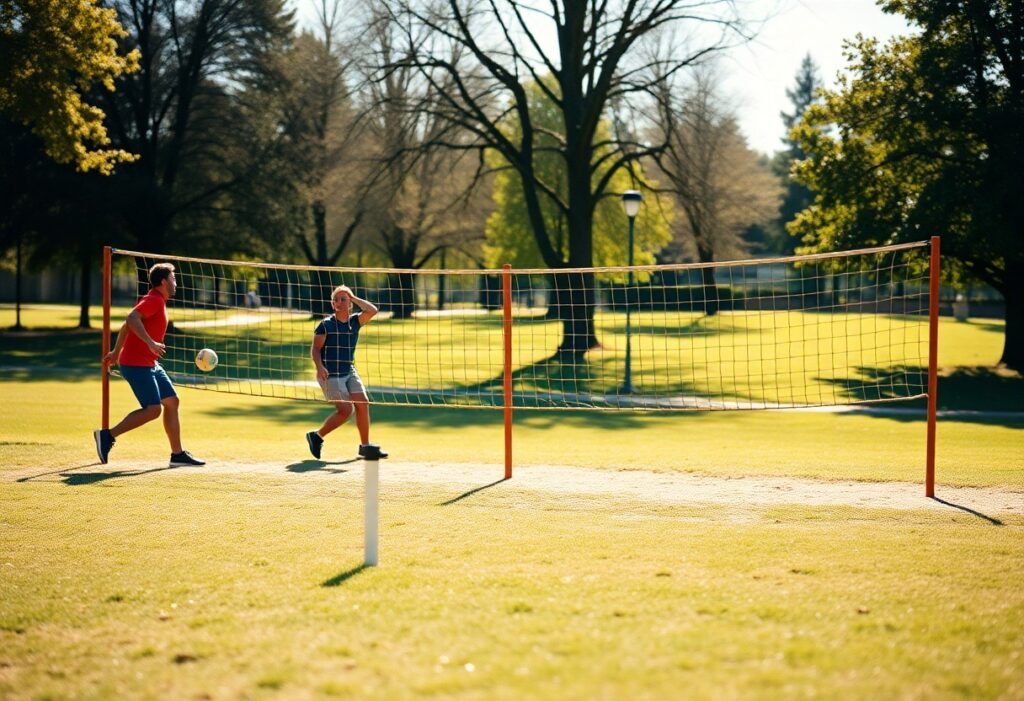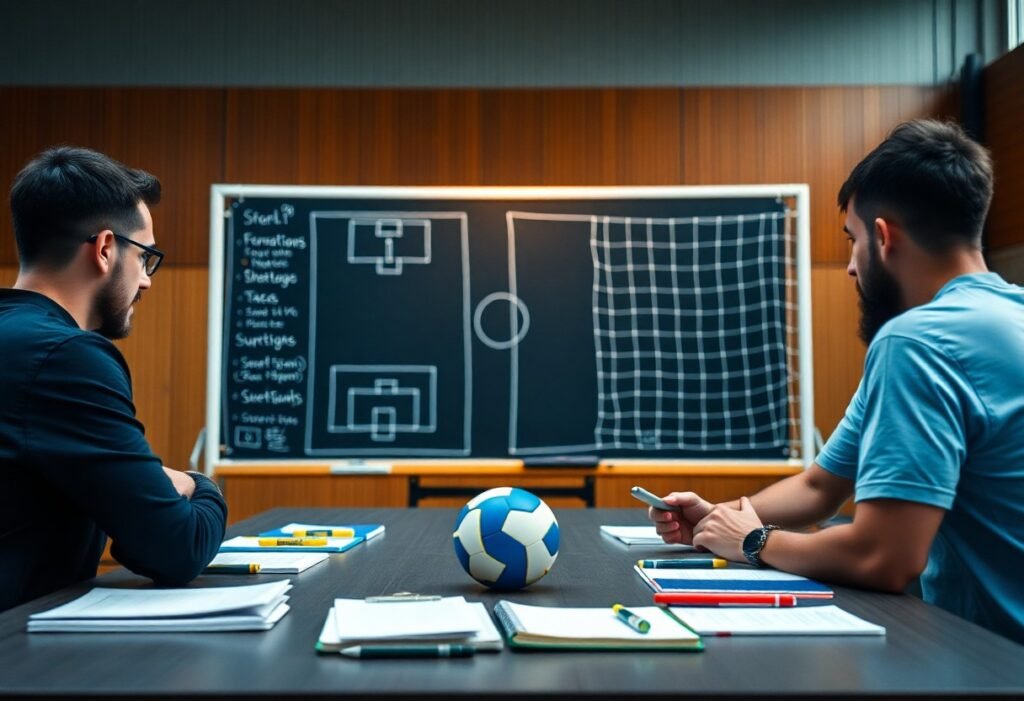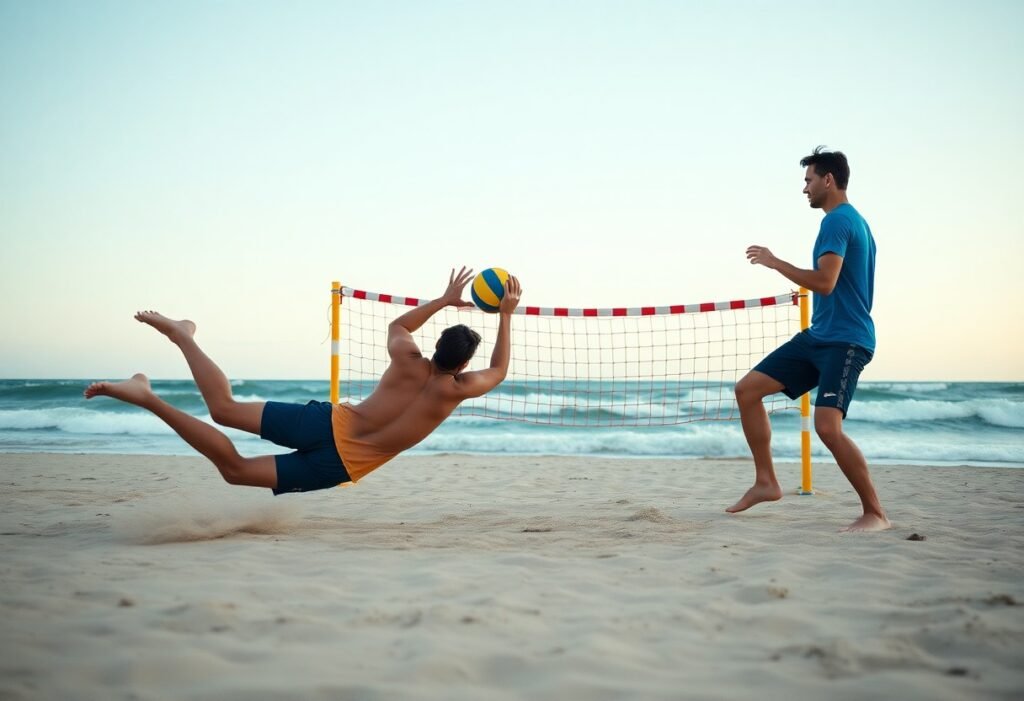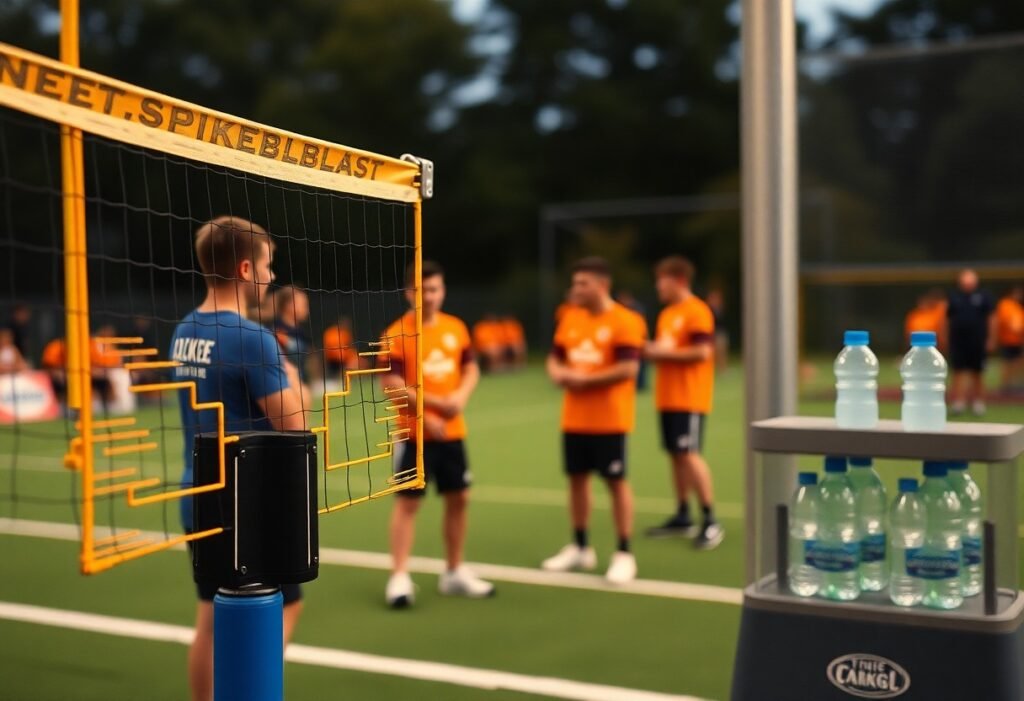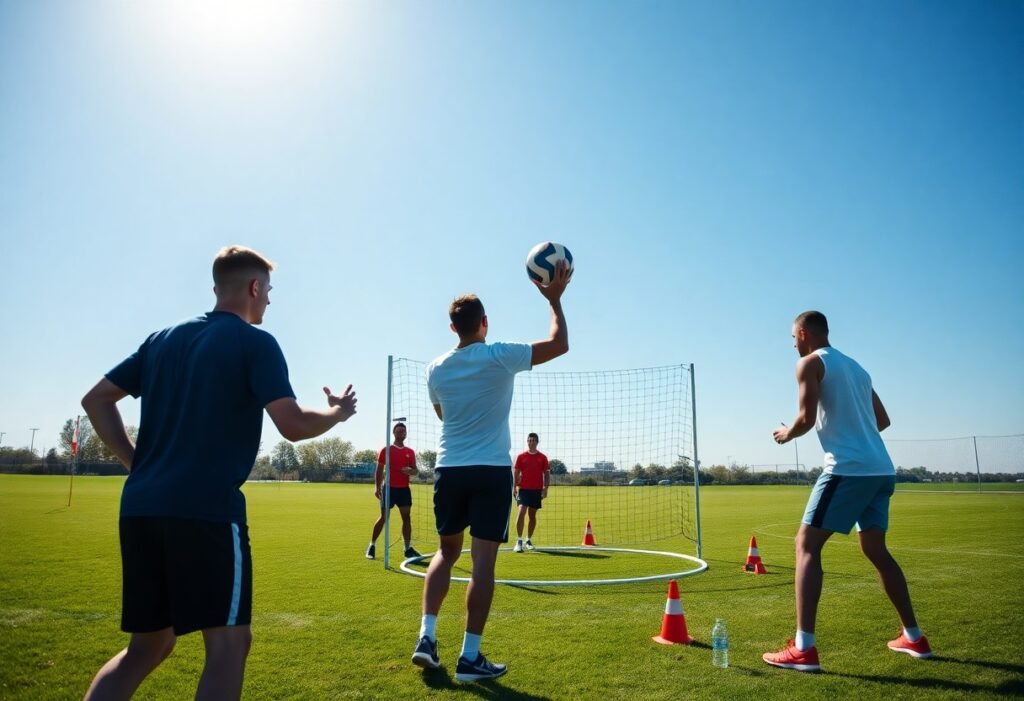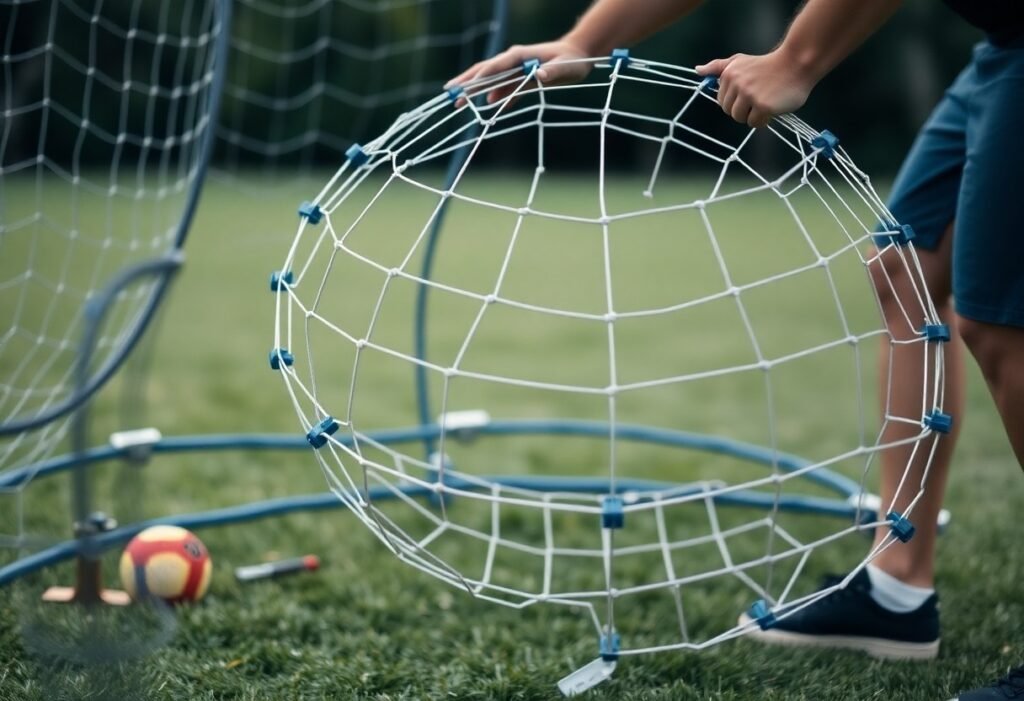Spikeball is often viewed as synonymous with roundnet, but understanding the differences between the two is important for enhancing your gameplay. While Spikeball refers to the branded version of the game, roundnet describes the sport itself, encompassing various brands and variations. Knowing these distinctions will help you choose the right equipment and improve your skills on the court. This post will clarify what sets Spikeball apart from other roundnet games, allowing you to elevate your playing experience to the next level.
Key Takeaways:
- Spikeball is a brand name, while roundnet refers to the general sport style played with a similar setup.
- Spikeball follows specific rules and equipment standards set by the official Spikeball LLC, whereas roundnet may have variations in gameplay and equipment.
- Both are played with a round net and a ball, but Spikeball is the most recognized version globally.
Overview of Spikeball
History of Spikeball
Spikeball originated in the 1980s, created by Jeff Knurek and patented in 1989. After a period of obscurity, it gained popularity through grassroots movements and social media in the early 2000s, evolving into a competitive sport with an established following. In 2008, Spikeball Inc. revitalized the game by branding and promoting it, paving the way for tournaments and a dedicated community.
Rules and Gameplay Mechanics
In Spikeball, two teams of two players each aim to hit a ball onto a taut, circular net. Teams alternately pass the ball off the net, scoring points when the opposing team fails to return it within three touches. The game is fast-paced, with an emphasis on strategy, teamwork, and agility.
The gameplay mechanics are straightforward yet engaging. You can serve the ball directly into the net, and your team has three touches to return it. Each time the ball lands outside the playing area or hits the ground, your team loses a point, making accuracy important. The game typically plays to 21 points, with teams changing sides after a predetermined score to ensure fairness.
Equipment Specifications
Spikeball equipment consists of a round net, durable ball, and a lightweight, collapsible frame. The net is positioned at a height of approximately 36 inches, while the ball used is designed for outdoor and indoor play, ensuring optimal bounce and durability.
The specifications of the Spikeball kit are designed for competitive play and portability. The net’s unique tension allows for intense rallies, while the ball’s size and weight are ideal for consistent performance. This setup not only facilitates easy transport for outdoor tournaments but also enhances the overall gameplay experience, contributing to its popularity.
Popularity and Cultural Impact
Spikeball’s popularity surged over the past decade, becoming a staple at beaches, parks, and campus events. The sport’s appeal lies in its accessibility and social aspect, attracting players of all ages and skill levels.
The cultural impact of Spikeball is evident in its widespread presence on social media platforms, professional tournaments, and enthusiastic college communities. Viral videos showcasing impressive gameplay further boost visibility, encouraging participation and fostering a growing network of enthusiasts eager to engage in this dynamic sport. Spikeball has effectively carved out a niche, reflecting the modern trend of combining fitness with social interaction.
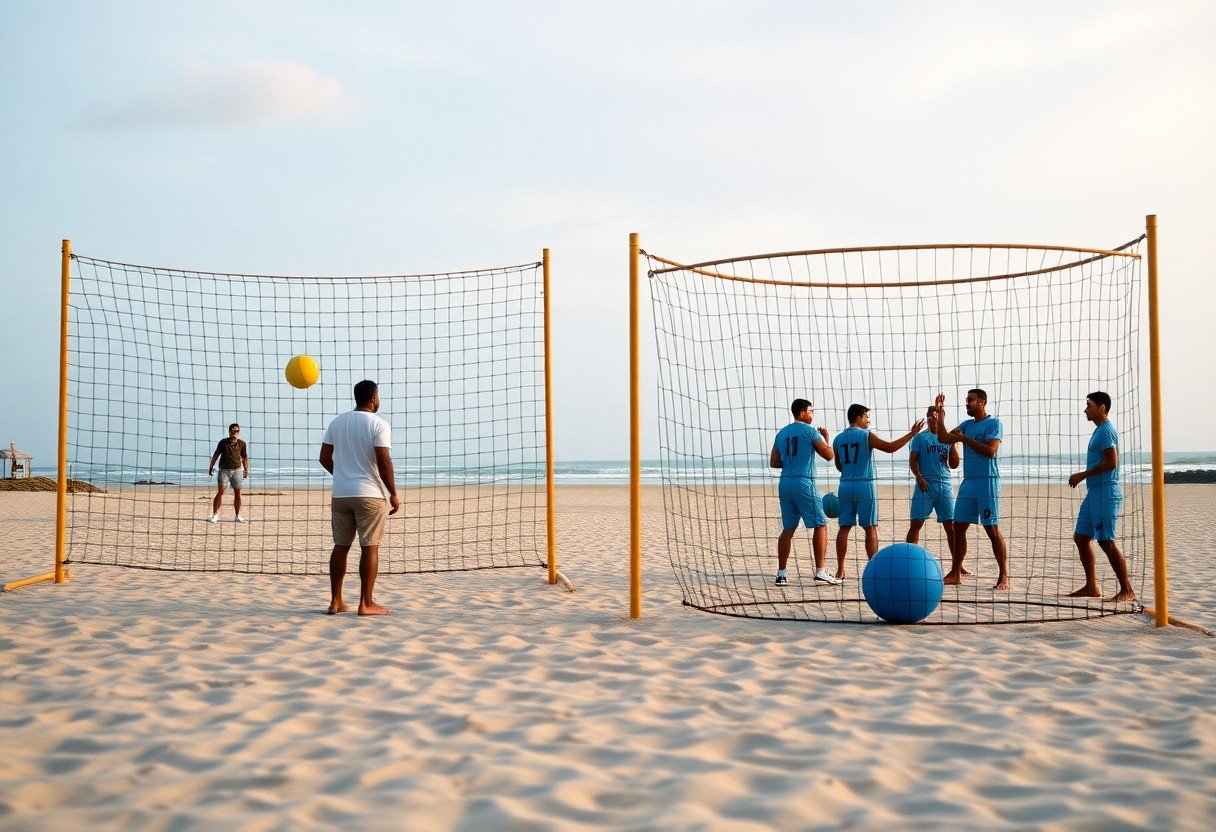
Overview of Roundnet
History of Roundnet
Roundnet originated in the late 1980s when it was called “roundnet.” The game gained popularity through informal beach and backyard games, evolving into its current form. In 2008, the Spikeball brand revitalized interest in the sport by incorporating modern marketing techniques, leading to a surge in its popularity and the establishment of organized competitions.
Rules and Gameplay Mechanics
The objective of roundnet is simple: you and your partner try to hit the ball onto the net, while your opponents must return it before it bounces twice. Each team has up to three touches to set up a shot. Scoring occurs when the opposing team cannot successfully return the ball to the net or when the ball strikes the ground outside the playing area.
Gameplay starts with a serve, which must bounce off the net into the opponent’s zone. Each team alternates hits, attempting to outmaneuver the other. Matches are typically played to 21 points, with a team winning by a margin of at least two points. Adhering to these rules ensures fast-paced action, keeping players engaged throughout the match.
Equipment Specifications
To play roundnet, you need a round net system consisting of a 36-inch diameter net attached to a slim steel frame and a lightweight, durable ball measuring approximately 12.5 inches in circumference. Players often bring their own nets and balls to matches, allowing for easy setup and transport.
The net is tensioned to allow for effective ball play, while the frame is designed to withstand outdoor conditions. Choosing high-quality equipment enhances your gameplay experience, and various brands offer specialized gear tailored to different skill levels and playing environments.
Popularity and Cultural Impact
Roundnet has witnessed exponential growth in popularity over the past decade, becoming a staple at beaches, parks, and college campuses. This surge has led to organized tournaments and leagues, along with a dedicated community that fosters competition and camaraderie.
As a result of its engaging and dynamic gameplay, roundnet has influenced social gatherings and outdoor activities, bridging gaps between diverse groups. The sport’s rise in prominence has also inspired countless online videos, merchandise, and even instructional content, further embedding it in popular culture.
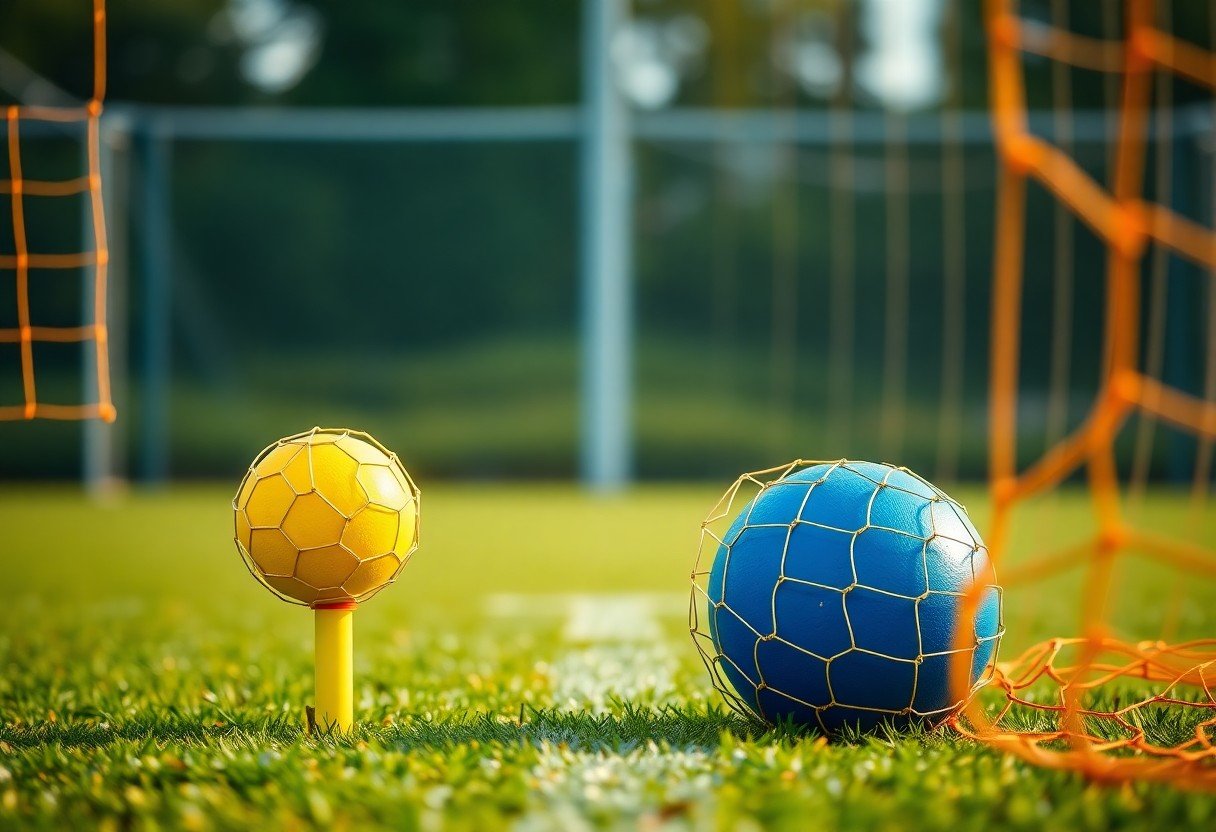
Comparison of Gameplay
| Aspect | Details |
| Field Size | Spikeball uses a 10-foot radius, while roundnet often allows for variations depending on league rules. |
| Team Composition | Spikeball is generally played with two teams of two players; roundnet can also include variations like 3v3 or 4v4. |
| Ball Type | Spikeball uses a smaller, more firm ball compared to some roundnet variations that may use foam balls. |
Field of Play and Setup
You’ll find that the field for Spikeball measures approximately a 10-foot radius circle around the Spikeball net. In contrast, roundnet may have varied setups depending on local rules and preferences, sometimes extending this area. Positioning players effectively within this space is key for optimal coverage and strategy.
Player Positions and Movement
Your positioning in Spikeball typically includes two players per team, while roundnet allows for more flexible team sizes. Movement is necessary; players must quickly adjust to defend and attack. Effective communication and anticipation of the ball’s trajectory greatly enhance your chances of scoring.
In both Spikeball and roundnet, players must exhibit agility and awareness. You’ll often need to rotate positions, allowing one player to set up a spike while the other prepares for defense. This dynamic movement not only sustains gameplay but also keeps the energy high, making it vital to develop synergy with your partner.
Scoring Systems and Point Accumulation
In Spikeball, you score by hitting the ball into the net in such a way that the opposing team cannot retrieve it. Points are typically counted until a team reaches 21, 15, or another set limit, depending on the match format. Roundnet may vary in scoring depending on league rules, offering both traditional and rally scoring systems.
Understanding the scoring systems is vital for strategic play. In Spikeball, the first team to reach the designated score wins, but the rally scoring system in some roundnet games can keep matches longer and change strategies mid-game since every serve offers a potential point. Adapting to these differences can enhance your gameplay.
Game Length and Match Styles
The length of Spikeball games can vary between casual play and organized tournaments, typically lasting around 15-30 minutes depending on the scoring system used. Roundnet, with its flexibility, might offer shorter or longer matches based on the same factors. Each format demands adaptability in tactics and stamina.
When participating in Spikeball tournaments, you may encounter rigid match formats with time limits, whereas in roundnet, you can often negotiate game length before play. This flexibility allows you to tailor your matches according to player preferences and conditioning, making it a versatile choice for casual and serious players alike.
Equipment Differences
Spikeball Set vs. Roundnet Set
The primary difference between a Spikeball set and a typical roundnet set lies in branding and design specifics. Spikeball sets are defined by their iconic design, which includes a patented rim and a tightly woven net. Roundnet sets may vary in these aspects, offering a broader variety of net styles and materials. This means that what you choose can affect the playing experience, especially in terms of responsiveness and control during the game.
Ball Specifications and Weight
The Spikeball ball weighs about 12 ounces and has a specific size that promotes better bounce and control. Other roundnet variations may feature different ball weights and sizes, impacting how the ball travels and interacts with the net. It’s imperative for you to note these specifications when selecting a set, as they can influence your gameplay style and strategy.
With Spikeball’s official ball, you have a defined experience tailored for optimal performance on the court. Any variations in roundnet balls can lead to differences in bounce, grip, and overall gameplay dynamics, which may require you to adjust your techniques accordingly. Knowing the specifications will help you make informed choices that suit your playing preferences.
Net Tension and Design Variations
In terms of net tension, Spikeball typically offers a consistent setup due to its proprietary design. This ensures optimal playability and allows for predictable ball bounces. Comparatively, roundnet sets can have varying levels of net tension and design, which can lead to different play characteristics and experiences.
Different tension levels might yield discrepancies in how the ball reacts upon hitting the net. For example, a looser net may absorb more energy, whereas a taut net translates to a quicker return of the ball. Understanding these design variations can be critical for your gameplay and may influence how you adapt your strategy during matches.
Durability and Portability
In terms of durability, Spikeball sets are built with robust materials designed to withstand rigorous play. On the other hand, roundnet sets can vary significantly in durability based on their construction. Portability is another key factor; Spikeball sets typically come with convenient carrying cases, making them easier for you to transport to various locations.
Investing in equipment that balances durability and portability is imperative for your playing experience. A stronger, yet lightweight roundnet set can be just as effective, but might not offer the same level of ease when it comes to transport. Evaluating these factors ensures that you can enjoy roundnet games without the hassle of equipment failures or difficulties in setup.
Skill Level and Player Demographics
Beginner Friendliness
Spikeball’s straightforward rules and simple setup make it particularly accessible for beginners, allowing newcomers to quickly learn the game. Unlike roundnet, which may have more detailed mechanics, Spikeball encourages casual play, offering you a less intimidating introduction to the sport.
Competitive Play and Tournaments
The competitive landscape for both Spikeball and roundnet is evolving, with Spikeball USA hosting numerous tournaments that draw elite players and teams from around the world. This level of organization elevates the competitive play you can experience, fostering a strong drive amongst players.
In recent years, Spikeball has gained significant traction, resulting in a structured tournament circuit with rankings and national championships. This formalization not only attracts skilled players but also raises the overall competitive standards, pushing you to elevate your game. Roundnet also features tournaments, but typically on a smaller scale, which can appeal to local or casual competitors seeking less pressure.
Community and Social Aspect
Both Spikeball and roundnet benefit from vibrant communities that facilitate social interaction, but Spikeball tends to have a more extensive reach due to its established popularity. This creates numerous opportunities for you to join clubs or local meetups.
The sense of community in Spikeball is amplified through social media platforms and organized events, enabling friendships and camaraderie among players of all skill levels. The shared passion for the game can turn casual matchups into lasting connections, enriching your overall experience as you engage with fellow enthusiasts.
Skill Progression Paths
Spikeball offers a clear skill progression path, allowing you to advance from beginner to advanced levels through practice and participation in tournaments. The game’s mechanics provide a solid foundation that can be built upon as you enhance your techniques.
You can find numerous online resources, tutorials, and local leagues designed to help you develop your skills and track progress. This growth is supported by a wealth of competitive opportunities, enabling you to challenge yourself against players at various levels while gradually mastering the intricacies of the game.

Health Benefits and Physical Impact
Physical Fitness and Endurance
Engaging in Spikeball or Roundnet significantly boosts your physical fitness and enhances your endurance. The fast-paced nature requires quick movements, agile footwork, and constant engagement of various muscle groups, promoting overall cardiovascular health. As you improve your skills, you’ll notice increased stamina and agility, making it a great workout option.
Injury Risks and Prevention
While Spikeball and Roundnet are fun, they come with potential injury risks. Common injuries include ankle sprains and muscle strains, often due to sudden directional changes. To minimize injury, prioritize warm-ups, practice proper techniques, and consider playing on softer surfaces.
In addition, investing in proper footwear and understanding your playing environment can dramatically decrease the chance of injuries. Always communicate with your teammates about your movements to avoid awkward collisions and ensure safety during play.
Social Interaction and Teamwork
Spikeball and Roundnet foster social interaction and teamwork, allowing you to build connections with friends and strangers alike. These games require coordination, communication, and collaboration, enhancing your social skills while bonding over shared experiences.
Playing in teams encourages camaraderie, making every match a chance to strengthen relationships. The competitive yet friendly atmosphere promotes mutual support, fostering a sense of belonging that extends beyond the court.
Cognitive Benefits of Strategy
Engaging in these games sharpens your cognitive skills, particularly your strategic thinking. You’ll need to think on your feet and anticipate the opponent’s moves, enhancing your decision-making abilities.
As you devise strategies and adapt to changing game scenarios, your mental agility increases. This enhanced cognitive engagement can translate to better problem-solving skills in everyday life, promoting overall mental wellness and sharpness.
For more insights related to equipment differences, refer to Spikeball Standard vs. Spikeball Pro.
Summing up
Upon reflecting, understanding the differences between Spikeball and Roundnet enhances your gameplay experience. While both involve similar dynamics and rules, your choice may depend on preferences regarding equipment, gameplay style, and social enjoyment. Spikeball typically emphasizes a more casual approach, making it an ideal fit for beach outings, while Roundnet can cater to competitive environments with a slightly different setup. By acknowledging these distinctions, you can better tailor your playing experience to fit your interests and the atmosphere you wish to create.
FAQ
Q: What is the main difference between Spikeball and Roundnet?
A: Spikeball is a branded version of the sport known as Roundnet. While the terms are often used interchangeably, Spikeball is specifically the name of the company that popularized the game and its unique equipment. Roundnet refers to the sport itself, which can be played with various brands of nets and balls.
Q: Are the rules for Spikeball and Roundnet different?
A: The basic rules are the same as they are based on the same sport. However, Spikeball has specific official rules laid out by the Spikeball company, which may differ slightly from informal or regional variations often seen in Roundnet games.
Q: Is the equipment for Spikeball different from other Roundnet brands?
A: Spikeball equipment includes a round, collapsible net and a specific ball designed for play. Other brands of Roundnet may offer variations in net size, ball type, and overall design, but they all aim to maintain the fundamental gameplay of Roundnet.
Q: Can one play Spikeball with equipment from other Roundnet brands?
A: Yes, players can use equipment from different brands, as long as it adheres to the general dimensions and gameplay mechanics of Roundnet. However, for official Spikeball tournaments, Spikeball equipment is required.
Q: Is there a difference in the community or competitive scene between Spikeball and Roundnet?
A: The Spikeball community is well-established with organized tournaments and a strong online presence, often focusing on its brand. The Roundnet community, while encompassing the broader sport, may feature various other brands and play styles, creating a more diverse but less centralized scene.


